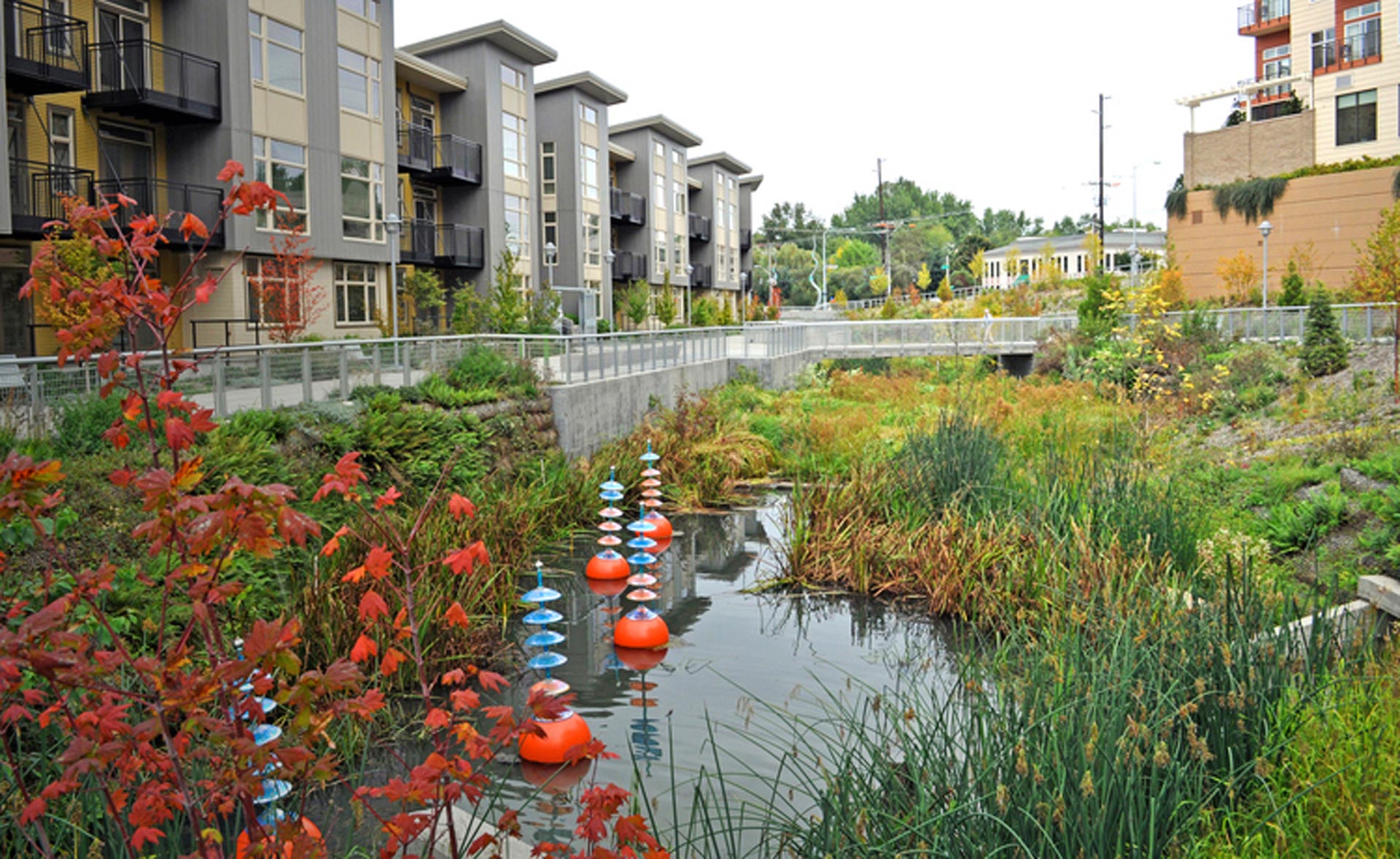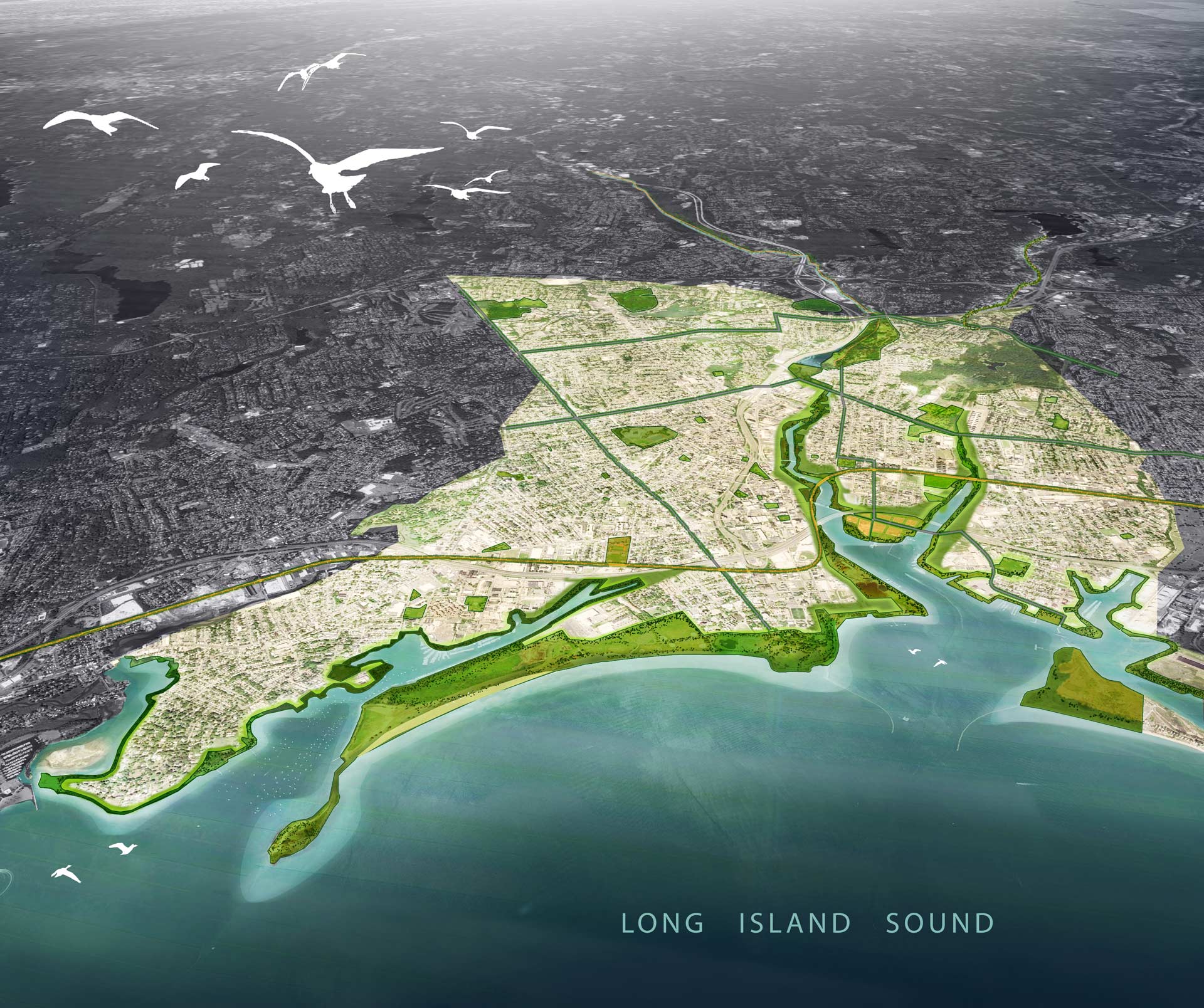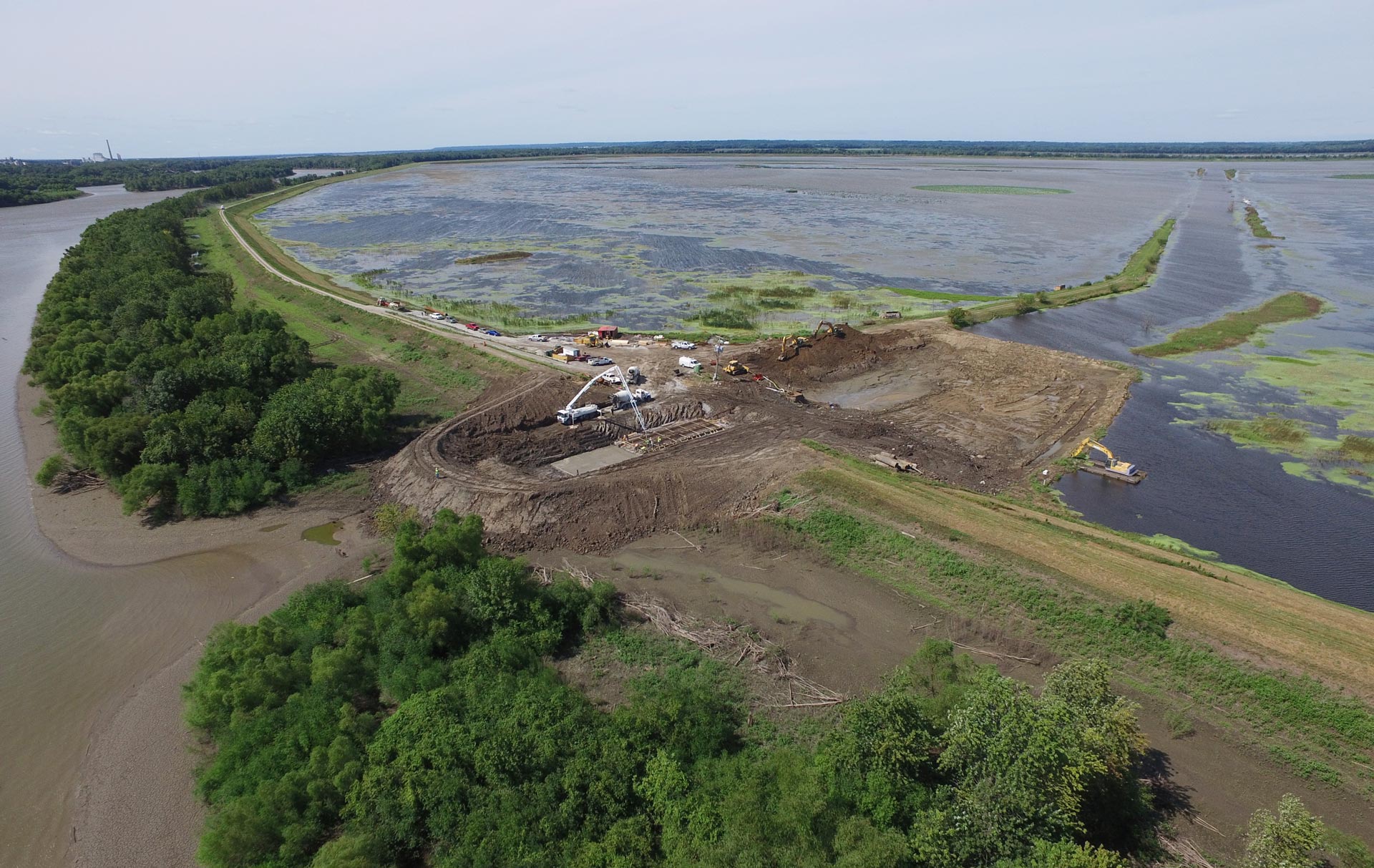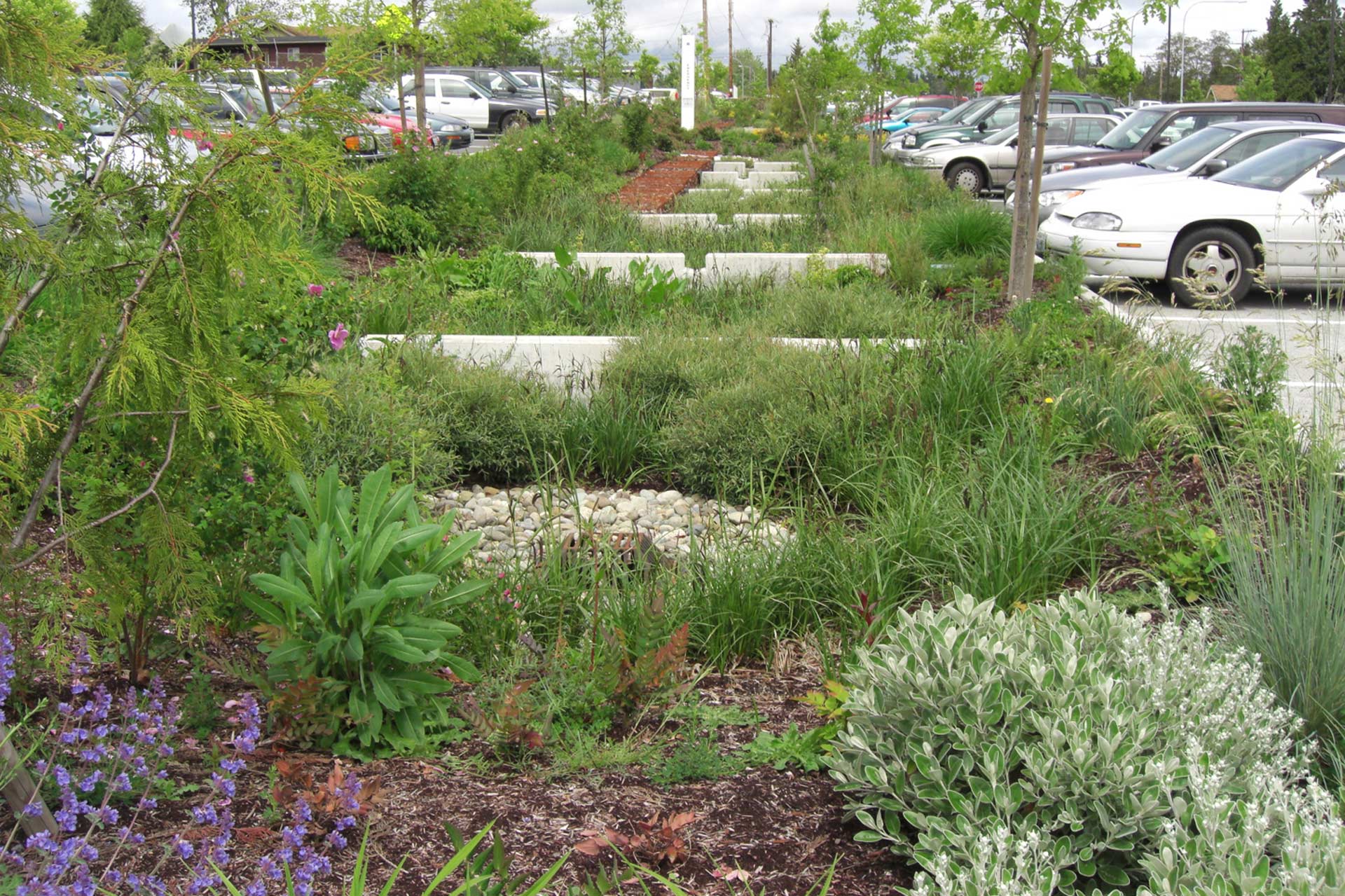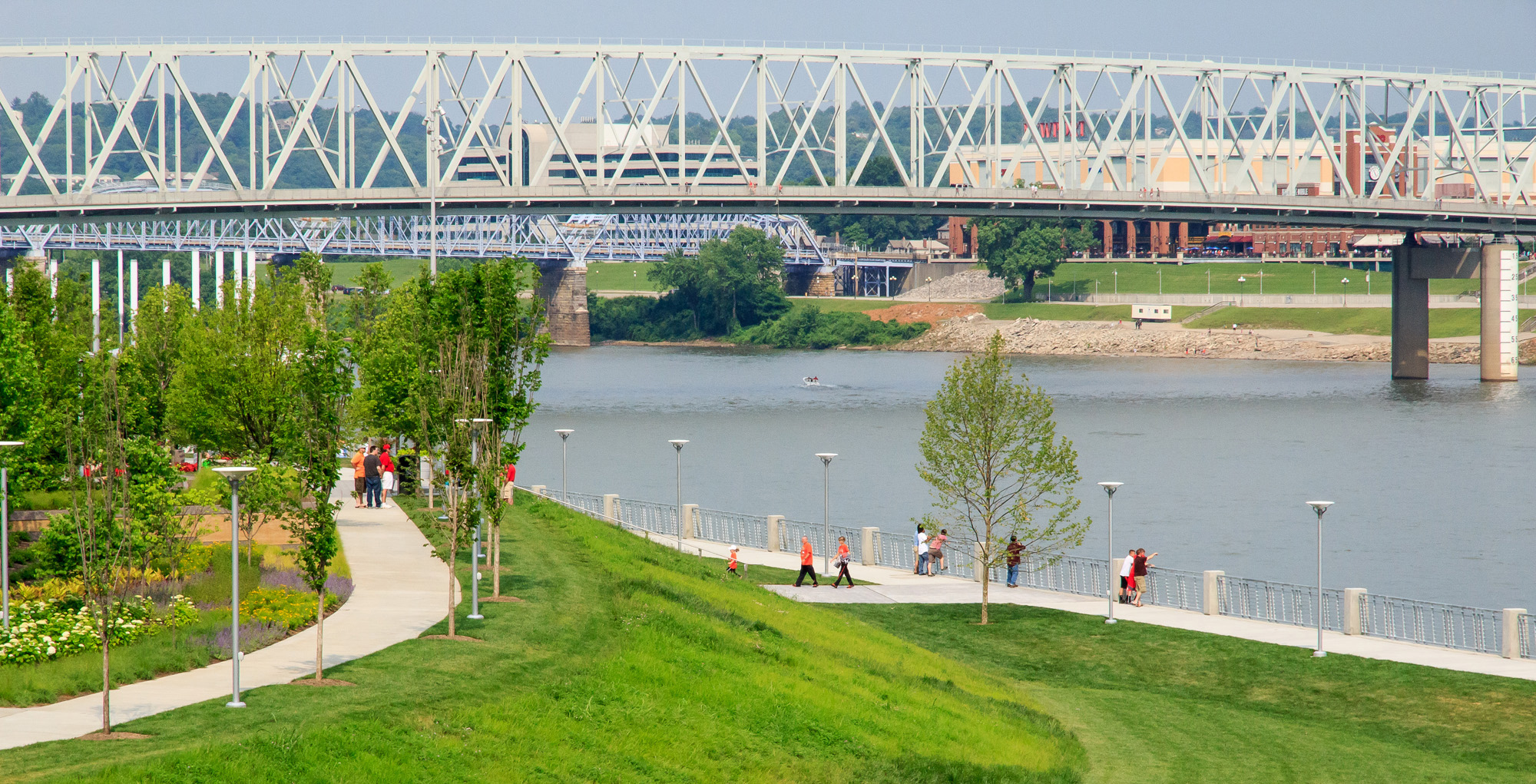Santa Cruz Riverbank and Ecosystem Restoration, Pima County, Arizona
Challenge
Severe environmental degradation along the Santa Cruz River and mitigation of rare but often severe flooding are the primary motivating factors in the Paseo de las Iglesias restoration project. Throughout the 20th century, water that once supported a dense riparian ecosystem was diverted for a rapidly growing local population. The decline of this vital ecosystem, as well as increasing erosion, further worsened flood risk. Recent efforts on the part of the Pima County Regional Flood Control District, the U.S. Army Corps of Engineers, and local activists and stakeholders have sought to revitalize a 7.5-mile historic stretch of the Santa Cruz River. The project fuses many strategies including: significant ecosystem revitalization, on-site water reclamation and storage, hybrid green/gray erosion control, historic programming, and public access and recreation.
Project Details
• Location: Tucson and Pima counties, Arizona
• Population: 526,116, 996,554 (2016)
• Strategies: Daylighting rivers and streams, Floodplain restoration, Mapping, Floodwater detention, Waterfront park, Green parking lots
Overview/History
Until the early 20th century, the Santa Cruz River supported a vast and diverse riparian ecosystem. For a time, the river also supported a booming population. However, increasing demand for water greatly impacted sustained surface flows. Within the 7.5-mile study area, sustained flows from the Santa Cruz largely ceased, devastating the riparian landscape. This is consistent with trends across Arizona, where 95 percent of riparian areas have been destroyed, largely due to diversion. Hard-scaped engineering of the Santa Cruz River, often intended to control or mitigate flooding and erosion, also contributed to the rapidly declining health of riparian areas. Urban growth within the floodplain of the Santa Cruz River further impacted the struggling ecosystems.
By the early 20th century, a concerted effort to restore a 7.5-mile stretch of the Santa Cruz River was undertaken by Pima County residents, the Pima County Regional Flood Control District, and the U.S. Army Corps of Engineers. By 2013, following a competitive selection process for contractors, construction on Phase I of the Paseo de las Iglesias project had begun. Phase I was completed by May of 2015, at which point the project area was open to the public.
Solution
Pima County settled on an approach that integrates ecosystem restoration, flood control, erosion mitigation through hybrid grey/green infrastructure, historic programing, and public recreation.
Ecosystem restoration efforts as part of Phase I of the project are considerable. Over 10,000 trees and cacti were planted. Irrigation was achieved using captured and reclaimed water. An array of plants and animals were incorporated, along with species-appropriate habitat such as raptor perches. Erosion control and management was achieved through a layered approach that fuses traditional “grey” infrastructure methods with a nature-based approach. Soil cement and gabions were used to stabilize at-risk areas, while heavily eroded banks were terraced to mimic the river’s historic condition. Additionally, the widening of the channel more appropriately mimics the natural contours of the river, in contrast to traditional channel deepening. According to a hydraulic analysis of the floodplain, these measures have benefited privately owned land within the floodplain boundary. Public access is integrated directly within the project’s restoration areas, including approximately eight continuous miles of multi-use paths, several parking areas, seating, and an equestrian staging area.
Funding/Financing
A 2004 feasibility study by the Corps estimated the total cost of the project to be approximately $90 million. Pima County has so far completed the first phase of the project, funded by a $14 million allocation from a 2004 Pima County Bond Election. The Pima County Regional Flood Control District believes funding for the remainder of the project will likely come from local, state or federal allocation.
Benefits
The benefits of the project are primary ecological. The loss of the Santa Cruz River as a consistent water source established the need for large-scale ecosystem rehabilitation. Green infrastructure practices of increasing infiltration, treatment and storage of rain and stormwater are crucial to the reintroduction of plant and animal life. Terracing and the installation of gabions along the formerly sheer riverbanks will reduce erosion and speed of floodwaters. A more vibrant riparian ecology in the form of trees, cacti and local plants will further stabilize the banks of the river, floodway and floodplain. In addition, a hydraulic analysis confirms a clear benefit to private property holders. Public health and social benefits are clear as well, as the completion of Paseo de las Iglesias adds seven miles of multi-use pathway to The Loop, a 100-mile network of trails.
